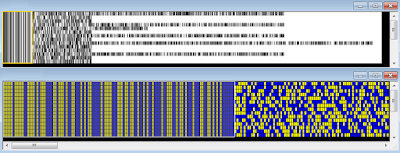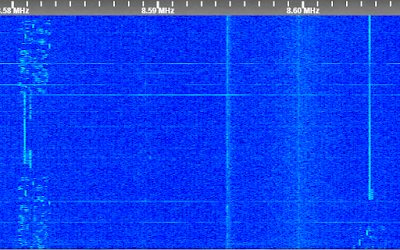(for background, read all the posts of this topic)
Russ-Mil CIS-75 75Bd/250 FSK system spotted this morning on 15832.0 KHz (cf). After differential decoding, the bitstream shows a clear 385-bit period and a 126-bit pseudo random sequence, generated by the polynomial x^7+x^6+1, which is inserted in the data stream probably to re-sync the receive modem among the messages, note that the sequence has one bit in error (maybe planned?):
111110111110011110101110000110111010011000101011000001011110001
110110110010010100100001001110010110100010001100110101010000000
111110111110011110101110000110111010011000101011000001011110001
110110110010010100100001001110010110100010001100110101010000000
 |
| Fig. 1 - 126-bit pseudorandom sequences |
 |
| Fig.2 - the synched stream |
By the way, the same polynomial x^7+x^6+1 is also used by the French-Ny in their 50Bd/850 FSK fleet broadcast as one of the two stream LFSR delimiters [1].




















